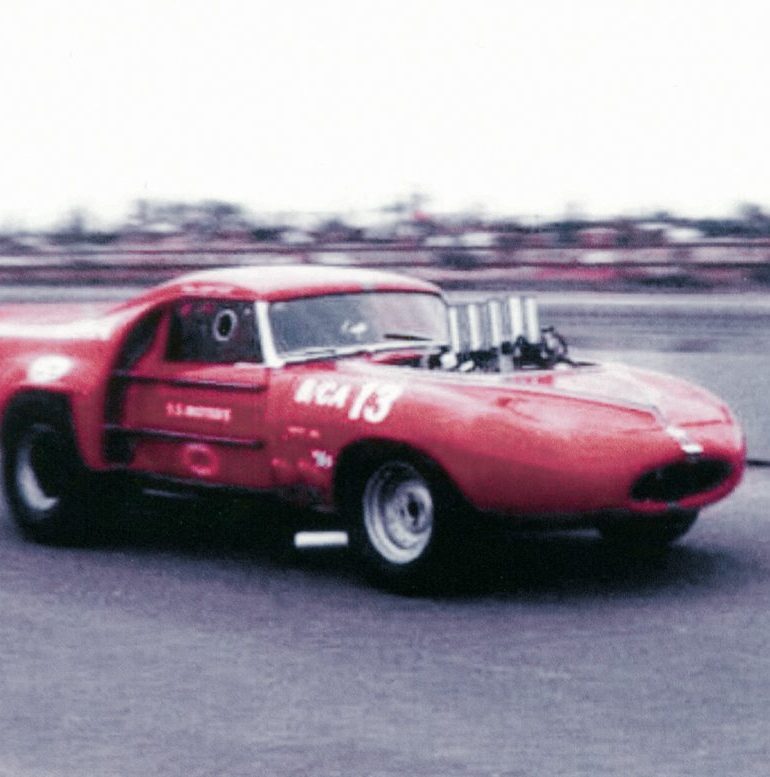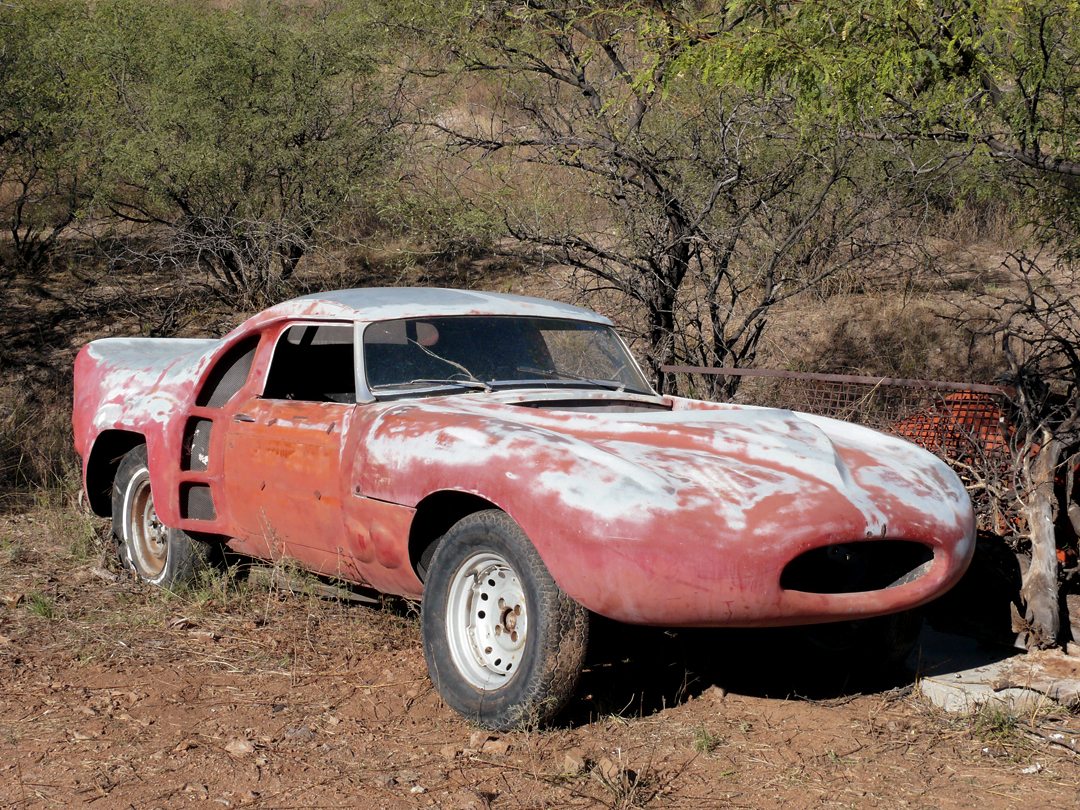Several months ago I received an irate email from a VR reader with one simple, albeit piercing, question; “Mark, why in the hell don’t you ever write about British drag racing cars?” British drag racing? What did I know about that? And how would I ever find a “hidden” one to write about?
It turns out yes, there was an entire world of drag racing lunacy on the far side of the pond. And although we may have popularized the sport hither, there was an incredible amount of straight-line activity yonder. A simple Google search turns up a myriad of sites including The British Drag Racing Hall of Fame (www.british dragracinghof.co.uk), Early British Drag Racing (www.oldstox.com/EarlyBritishDrag Racing.htm), and Drag Racing at Santa Pod Raceway (SPR) UK (www.santapod.co.uk). Of course, without a car found in a chicken coop or one with a tree growing through it, there can be no Hidden Treasures. And that is where Owen Gibson of Arivaca, Arizona enters the story.
Sometime in October 2010, Gibson received a telephone call from his friend Jules Thresher, who owns a high-end muscle car parts business. Thresher told Gibson that he knew a guy who had found an old MG in a junk yard where cars were being crushed. Better yet, Gibson could have the car for $300. According to Gibson when it comes to old cars he’ll travel to see anything interesting or weird with a price tag of $300. Gibson said, “When I arrived at the yard there was no MG to be seen. Instead there was this wild looking highly modified something-of-a-car. When I walked up closer I recognized the doors were MGB. The car was right-hand drive and was obviously a high-end build, but past that I had no idea what the car was and the owner had absolutely no information. When I talked further with the owner what I did I learn was that he was building a Chevy truck street dragster. It just so happened that I had an explosion-proof bellhousing for a 4-speed Muncie in the back of my rig and that’s exactly what I traded for his unknown car.”
Once back at his shop, Gibson started doing research. He posted photos of his find on the H.A.M.B. (www.jalopy journal.com) and almost immediately he received an email from a friend who recognized the car as the famed Megalomania drag racing car from the U.K. Gibson was stunned.
The Megalomania was built in 1965 by Brit Keith Sales. Starting with a 1963 MGB chassis, Sales stiffened the structure with a roll cage and substantial bracing. Front suspension was MGB, adapted to accept stiffer springs and BMC shocks. The rear end was reconfigured, with the axle coming from a Ford Customline and the suspension consisting of semi-elliptic leaf springs and Bedford shocks. Brakes up front were MGB discs and hydraulic drums did the work at the rear. The front wheels spun Dunlop 6.4 rubber and were fabbed from 15-inch 5J Dunlop rims, reversed MGB centers and TR3A components. The rear wheels were 15-inch steel units whose rims were widened to 10 inches to allow for Indy 12-inch tires.
The Merriam-Webster Dictionary defines megalomania as “a mania for great or grandiose performance.” And it takes but a single gaze at Sales’ creation to understand that his mania was hurled onto this car in the form of outrageous fiberglass bodywork. Sales hired Fibre Glass Repairs to perform the job and the result was unlike anything that had ever rolled atop planet Earth. The frontal area displays a unique and distinctly fluid shape which wraps around the front wheels and oozes over the forward portion of the cowl. As the coachwork transitions to the rear, the burly drive wheels are accentuated by cheese-grater-like flared openings and adamant wheel haunches. Not pretty, more insane in appearance, it is hard to avert one’s eyes from this retinal stimulant.
The first engine to spin the tires was a 370 cubic inch small block Chevy. After the first two racing events this engine was swapped out for a 1965 Chevy 396 cubic inch fuel-injected monster from John Wachter’s (a U.S. Air Force man stationed in Europe) racecar. At 6489-cc, with a compression ratio of 10.75:1 and with the help of a Crower Imperial roller cam, Wachter’s engine made 400-plus horsepower without breathing hard. And it provided Sales’ car with even more grandiosity.
Gibson has been hard at it researching the car’s racing history and has thus far uncovered the following results from SPR for elapsed time and speed: August 14, 1966, 14.649 seconds at 93.46mph, setting both records in the C Class; April 23, 1967, won Super Eliminator at 13.54/104.6; July 1-2, 1967, won Top Eliminator at 12.5; October 29, 1967, 14.843 on a rain-soaked strip.
Gibson has also been piecing the story together as to how the car came to live in the Arizona desert for 43 years. Gibson said, “Based on the information I’ve gathered from several individuals it appears that Wachter got the car from Keith Sales in 1968. It was about this time that the car ‘disappeared.’ My guess is that Wachter shipped the car to Davis-Monthan Air Force Base in Tucson.”
Gibson received the car minus engine and transmission and plans to restore it back to its fuel-injected 396 Chevy configuration. After that, who knows? Maybe some exhibition burnouts for Her Majesty?
Sadly I must end this installment quickly as research must go on. I just received a rather snippy email about this column’s lack of attention to vintage Formula 1 cars of the Ukraine.





